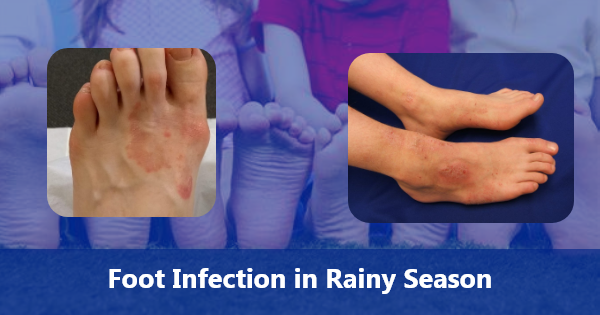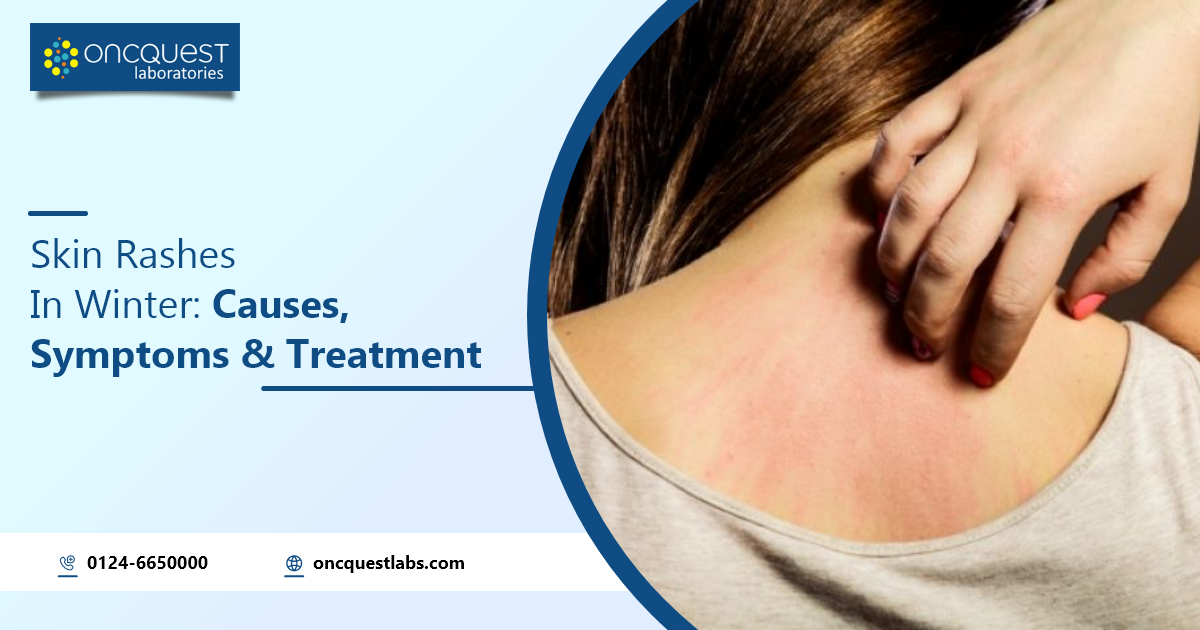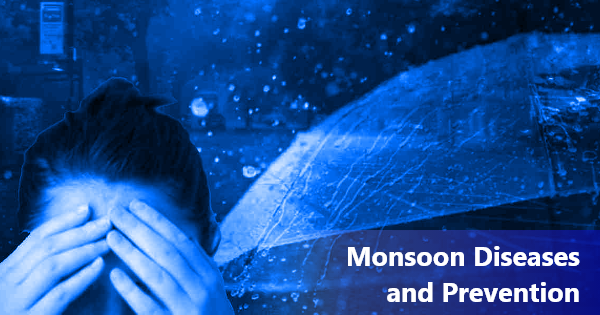During the rainy season, your feet are more susceptible to fungal and bacterial infections due to increased moisture and humidity. Here are some common foot infections and tips for prevention:
Athlete’s Foot (Tinea Pedis):
Cause: Fungal infection.
Symptoms: Itching, burning, redness, cracked skin, blisters.
Prevention: Keep feet clean and dry, wear breathable shoes, change socks regularly, use antifungal powders.
Plantar Warts:
Cause: Human papillomavirus (HPV) infection.
Symptoms: Small, rough growths on the soles of feet, may cause discomfort.
Prevention: Avoid walking barefoot in public places, keep feet clean and dry.
Cellulitis:
Cause: Bacterial infection.
Symptoms: Redness, swelling, pain, warmth, fever.
Prevention: Keep feet clean and dry, treat minor cuts and wounds promptly.
Ingrown Toenails:
Cause: Nails growing into the surrounding skin.
Symptoms: Pain, redness, swelling, infection.
Prevention: Trim nails straight across, avoid tight shoes.
Treatment for Foot Infections:
Clean and Dry: Wash feet with mild soap and water, and pat them dry thoroughly.
Topical Antifungals: Over-the-counter antifungal creams, powders, or sprays can help treat fungal infections like athlete’s foot.
Medicated Pads: Use medicated pads or cushions to relieve pressure from ingrown toenails.
Warm Soaks: Soak infected feet in warm water with Epsom salts to reduce pain and inflammation.
Avoid Tight Shoes: Wear well-fitting, breathable shoes to prevent friction and allow proper air circulation.
Elevate Feet: Elevate your feet to reduce swelling and promote healing.
Medical Consultation: For severe or persistent infections, consult a healthcare professional.
FAQs about Foot Infections in Rainy Season:
Q: Can I walk barefoot during the rainy season?
A: It’s advisable to avoid walking barefoot in damp or public areas to reduce the risk of infections.
Q: Are foot infections contagious?
A: Some foot infections, like athlete’s foot, can be contagious. Avoid sharing footwear and maintain good hygiene.
Q: Can I treat foot infections at home?
A: Mild cases of fungal infections may respond to over-the-counter treatments, but consult a doctor for severe or persistent infections.
Q: How can I prevent foot infections in the rainy season?
A: Keep feet clean and dry, wear breathable shoes, change socks regularly, and promptly treat any cuts or wounds.
Q: When should I see a doctor for a foot infection?
A: If the infection is severe, spreading, causing fever, or not improving with home care, seek medical attention.
Q: Can foot infections lead to complications if untreated?
A: Yes, untreated foot infections can lead to more serious complications, especially in individuals with diabetes or compromised immune systems.
Remember, practicing good foot hygiene and taking preventive measures can help you avoid foot infections during the rainy season. If you suspect an infection or have concerns, consult a healthcare professional.
During the monsoon season, increased moisture and humidity can create a favorable environment for various foot infections. Here are some different types of foot infections that are more common during the rainy season:
Athlete’s Foot (Tinea Pedis):
Cause: Fungal infection (often Trichophyton species).
Symptoms: Itching, burning, redness, scaling, blisters, and peeling skin, particularly between toes.
Prevention: Keep feet dry, avoid walking barefoot in damp areas, wear breathable shoes, and use antifungal powders.
Fungal Nail Infections (Onychomycosis):
Cause: Fungal invasion of the nails.
Symptoms: Thickened, discolored, brittle nails that may crumble or split.
Prevention: Keep nails clean and trimmed, avoid tight-fitting shoes, and promptly treat any injuries to the nails.
Plantar Warts:
Cause: Human papillomavirus (HPV) infection.
Symptoms: Rough, raised growths on the soles of the feet, often with black dots (clotted blood vessels).
Prevention: Avoid walking barefoot in public places, especially damp areas like pools and locker rooms.
Cellulitis:
Cause: Bacterial infection, often due to cuts, blisters, or cracks in the skin.
Symptoms: Redness, swelling, pain, warmth, and possibly fever.
Prevention: Keep feet clean, moisturized, and avoid injuring the skin.
Scabies:
Cause: Infestation by the human itch mite.
Symptoms: Intense itching, small red bumps, and burrow-like tracks on the skin.
Prevention: Maintain personal hygiene, avoid close contact with infected individuals.
Pitted Keratolysis:
Cause: Bacterial infection, often due to prolonged wetness and occlusion of the feet.
Symptoms: Small, shallow pits or depressions on the soles of the feet, often accompanied by an unpleasant odor.
Prevention: Keep feet dry, wear open-toed or breathable shoes, and use antimicrobial foot powders.
Bacterial and Fungal Intertrigo:
Cause: Irritation and infection of skin folds due to friction, moisture, and warmth.
Symptoms: Redness, itching, burning, and soreness in skin folds between toes and other areas.
Prevention: Keep skin folds clean and dry, use absorbent powder, and wear moisture-wicking socks.
It’s important to maintain proper foot hygiene, wear appropriate footwear, and promptly address any signs of infection. If you experience persistent or worsening symptoms, consult a healthcare professional for accurate diagnosis and treatment.
Be proactive in monitoring your Health by scheduling blood test at Oncquest Laboratories





